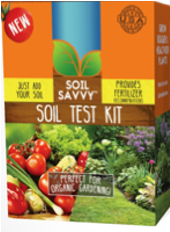
Soil Savvy P.O. Box 1397, Walla Walla WA 99362-1397
Soil Savvy™ Analysis Report

NPK Fertilizer
Recommendation
Synthetic Fertilizer
No N-P-K Needed
Or
Organic Fertilizer
No N-P-K Needed
NOTE: An Additional Micronutrient Application may be Beneficial
Soil Savvy Results (ppm)
| Nutrient: |
|---|
| Optimal Range (ppm): |
| Your Soil (ppm): |
| MacroNutrients | ||||||||
|---|---|---|---|---|---|---|---|---|
| Total N | NO₃-N | NH₄-N | P | K | Ca | Mg | S | Na |
| 8-16 | - | - | 4-10 | 30-55 | 90-175 | 15-35 | 6-12 | 1-20 |
| 28.13 | 19.78 | 8.35 | 48.75 | 80.15 | 338.13 | 62.86 | 84.21 | 14.12 |
| MicroNutrients | |||||
|---|---|---|---|---|---|
| Fe | Mn | Zn | Cu | B | Al |
| 2-4 | 2-4 | 0.1-0.2 | 0.05-0.1 | 0.1-0.2 | 1-5 |
| 1.8 | 11.54 | 0.15 | 0.24 | 0.79 | 9.92 |
| pH |
|---|
| 6-7 | 5.78 |

Soil Savvy™ Analysis Report

Follow all manufacture’s guidelines for fertilizer use and handling.
Some recommendations may require split applications of fertilizer to achieve total recommended application amount. Additional testing may be warranted if you are concerned about proper plant health and/or the need for rescue treatments. Please visit www.mysoilsavvy.com or contact us at 1-800-535-2479 should you or your staff require additional assistance.
Note: Expressions are illustrated for normal plant growth. Available nutrients shown are derived under optimal moisture conditions. Based on your soil test, recommended additions and amendments are suggested to achieve optimal nutrient levels. Crop and plant needs may vary during the course of a growing cycle. Varying crop needs and conditions may require assistance from specialists such as those within your local garden center or extension office.